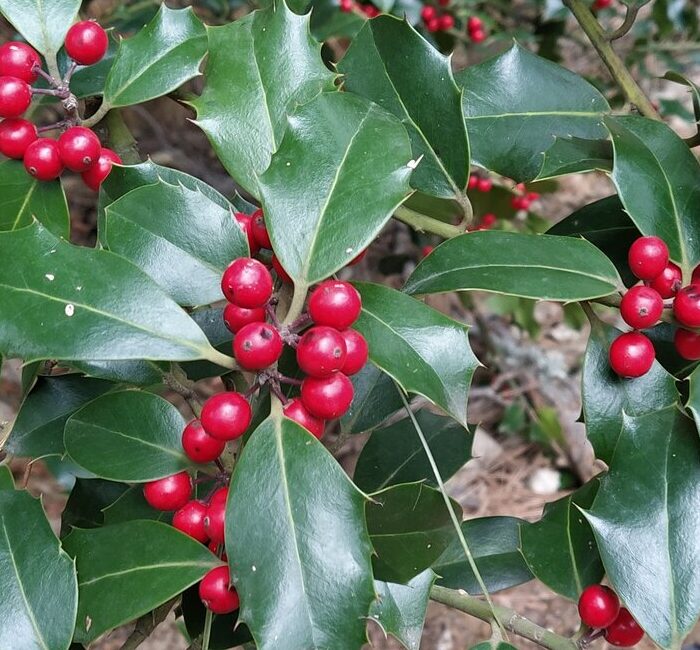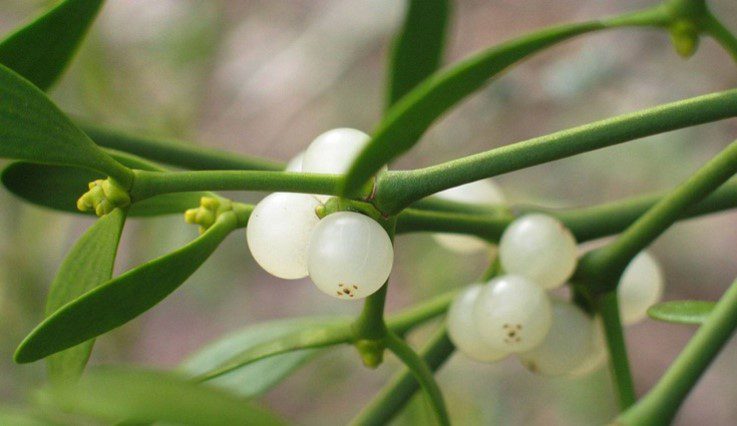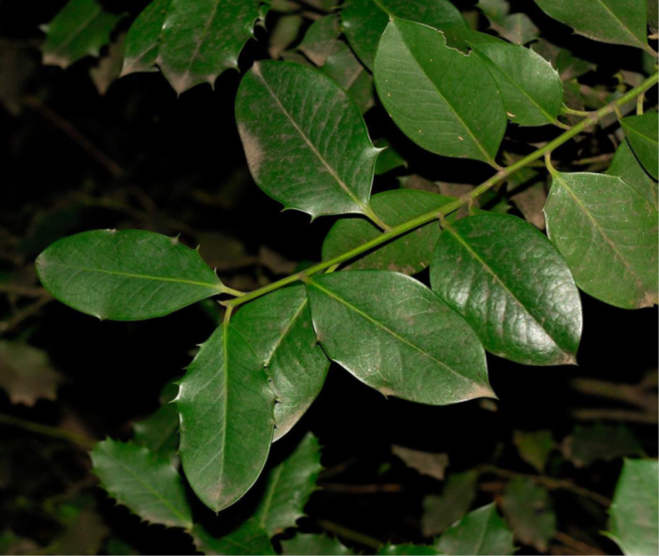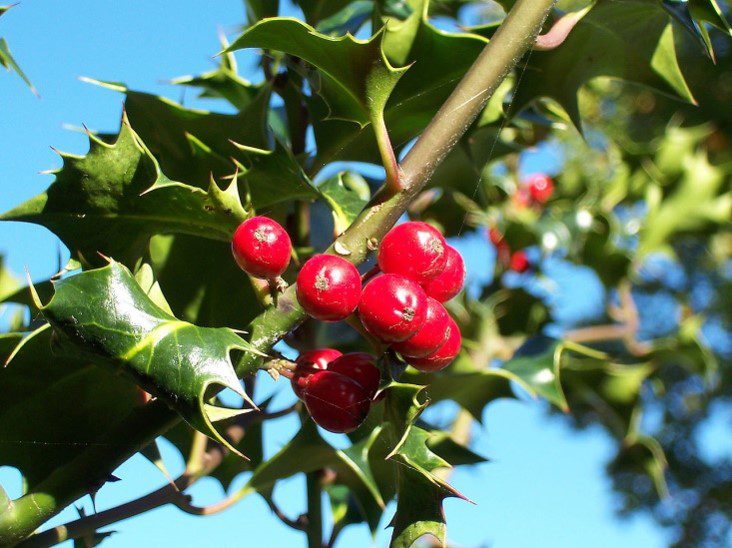
The winter season, marked by the heart of winter, is heavily steeped in the grand celebrations of Christmas, New Year’s, and Epiphany.
The so-called “Western” culture boasts a plethora of historical traditions and myths, particularly during this period. When it comes to the tradition of decorating homes for this season, two plants are often mentioned: Holly, also known as Ilex or hulst, and Mistletoe.
Holly
This parasitic evergreen plant, scientifically known as Viscum album, belongs to the Loranthaceae family. It is dioecious (bearing male and female individuals), woody, and evergreen, taking the form of a shrub.

Holly manifests in three forms:
- Forma specialis mali: attacks broad-leaved trees such as oak, poplar, maple, beech, willow, and oak.
- Forma specialis pini: attacks pine species.
- Forma specialis abietis: attacks fir species.
Its leaves have a leathery texture, lack veins, and are light green in color. Its berries are white, ripening in early winter. These are the characteristics of the plant that explain its use as a decoration during the Christmas period. This usage is more widespread in European countries because during winter, the plant remains green and fruitful, offering an optimistic visual contrast to the typically barren landscapes.
Practically, it has been and still is a convenient and inexpensive ornament, which one simply needs to take the trouble to collect from nearby forests. Additionally, the drastic removal of mistletoe from infected trees improves the overall health of the forest by eliminating a parasitic species. However, locating mistletoe in coniferous forests (pines, firs) requires a more thorough and investigative look from the forest explorer, as these forests are evergreen and lush even in winter.

The seed of mistletoe is carried by various birds that consume its fruit from tree to tree. The germinating seed creates a sucker on the bark of the host, from which the main root system of the parasite develops, penetrating the bark and entering the woody part of the host. The parasite absorbs water and various salts from the host, but synthesizes carbohydrates and proteins with its own foliage. The penetration into the woody part of the host gradually reduces the mechanical support capacity of the weight of the growing part beyond the point of infection, and over time, fracture occurs. Economically, the infected wood can be used as fuel.
Mistletoe
Another famous plant during Christmas around the world, mistletoe is usually an evergreen shrub, although some species are deciduous. It belongs to the genus Ilex, with Ilex aquifolium being the common species found in Greece. The leaves are alternate, smooth or serrated, often with spiny teeth. The flowers are unisexual, 4-merous, and usually form singly or in small clusters. The fruit is a drupe with 4 stony seeds.

Mistletoe belongs to the woody shrubs thriving in cold and high-altitude soils, being resilient to weather changes, infrequent attacks by pests, and diseases, and not requiring special cultivation care. Its characteristic slow growth usually leads to shrub form, although in favorable conditions, it can reach up to 10 meters in height.
It usually takes on a pyramid shape with dense foliage consisting of leathery, hard, glossy, slightly wavy leaves, with peripheral serrations ending in thorns. Its flowers are small and aromatic, appearing in the leaf axils in small clusters during the period from April to June. Their color is white or yellowish-white. The fruits are spherical with a diameter of about 5-7 cm and have a vibrant red color. They give the plant special ornamental value and appear only on plants with female flowers in September, remaining until January.

These plants’ characteristics make the use of their branches with berries enticing as decorations during the festive Christmas season, as the vibrant green of the leaves and the contrast with the red berries evoke feelings of optimism in the heart of winter.
The fruit-bearing branches of the holly, similarly to those of the mistletoe, have traditionally been accessible and easy decorations for both rich and poor, giving a note of optimism and renewing the certainty for the upcoming spring, where nature will generously provide the new harvest and better days.
Historically, the use of these plants as decorations in winter festivities draws from practices in pre-Christian religions, which Christianity wisely adopted, incorporating these practices into its own narrative and building its own tradition.
* by George Ziankas
Giorgos Ziankas is a Forestry Environmentalist, Aristotle University of Thessaloniki.
MSc in Environmental Urban Planning.

